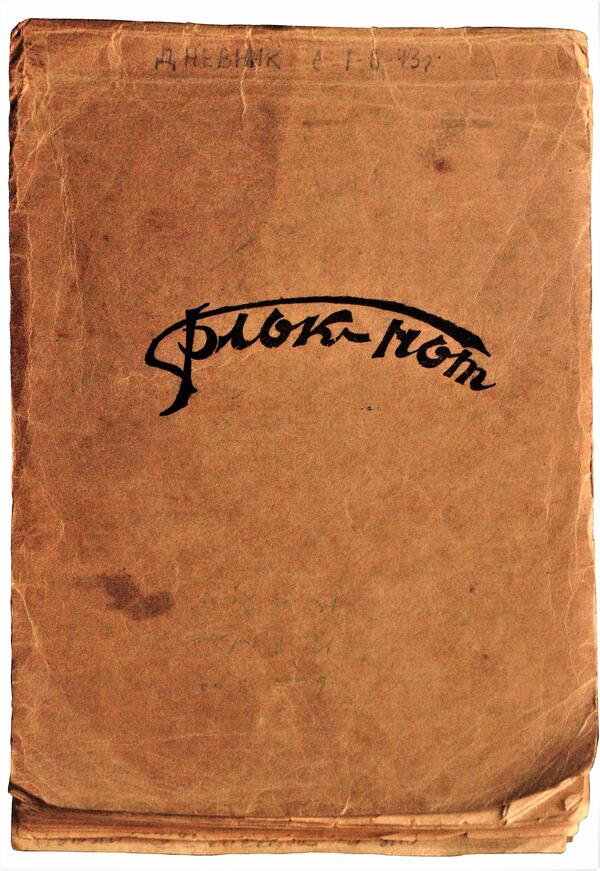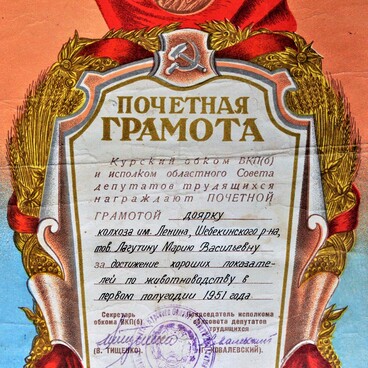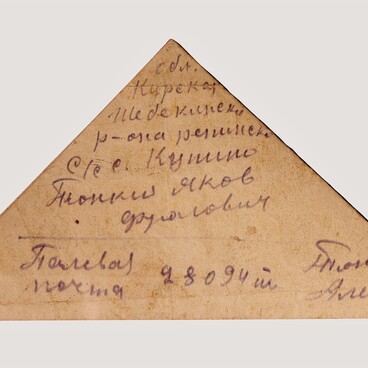In the Shebekino museum collections there are a lot of documents of the times of the Great Patriotic War: Red Army certificates, letters, letters of commendation, death notifications. One of the most valuable exhibits is the front-line diary of Makar Nedosekov, a junior lieutenant, pilot of the 3rd Guards Rostov-Don fighter aviation regiment of the 235th fighter aviation division.
Nedosekov was born in 1920 in the village of Nikolskoye, Shebekino district of Kursk region (now Belgorod region). In 1940 he was drafted into the army, and three years later he was sent to war. There, almost immediately, he began to keep a diary.
In total, there were 50 pages in his notebook, which rendered the impressions of the young pilot, who got to the front for the first time. Makar Nedosekov made the first entry in his diary on April 8, 1943, and the last one on October 16.
In his diary, Nedosekov wrote about his experiences, successes, and failures. For example, how he failed to land during one of the test flights and damaged the plane. The young pilot was afraid that he would “no longer be entrusted with a machine” and that he would not be able to fly. The mistake was forgiven, and during six months at the front Makar Nedosekov made 75 combat sorties, shot down three enemy planes personally and two in a group. He received two orders for his combat services: the Red Star and the Patriotic War Medal of the first degree.
In his diary, in addition to the wartime everyday routine, Nedosekov described the relationship with his comrades-in-arms and relatives. He recalled how they had celebrated the award a fellow soldier received for shooting down a “Junkers”, he shared his joy from the letters he received from home, he told how he looked forward to good weather in order to be able to fly, when “it [was] 10 points cloudy”.
Nedosekov finished writing his diary as his notebook ran out of pages. It is unknown whether he started a new notebook, but three weeks after his last entry, on November 6, 1943, his plane was shot down. Makar Nedosekov was killed and buried in a mass grave in the town of Vasilkov in the Kiev region.
Nedosekov was born in 1920 in the village of Nikolskoye, Shebekino district of Kursk region (now Belgorod region). In 1940 he was drafted into the army, and three years later he was sent to war. There, almost immediately, he began to keep a diary.
In total, there were 50 pages in his notebook, which rendered the impressions of the young pilot, who got to the front for the first time. Makar Nedosekov made the first entry in his diary on April 8, 1943, and the last one on October 16.
In his diary, Nedosekov wrote about his experiences, successes, and failures. For example, how he failed to land during one of the test flights and damaged the plane. The young pilot was afraid that he would “no longer be entrusted with a machine” and that he would not be able to fly. The mistake was forgiven, and during six months at the front Makar Nedosekov made 75 combat sorties, shot down three enemy planes personally and two in a group. He received two orders for his combat services: the Red Star and the Patriotic War Medal of the first degree.
In his diary, in addition to the wartime everyday routine, Nedosekov described the relationship with his comrades-in-arms and relatives. He recalled how they had celebrated the award a fellow soldier received for shooting down a “Junkers”, he shared his joy from the letters he received from home, he told how he looked forward to good weather in order to be able to fly, when “it [was] 10 points cloudy”.
Nedosekov finished writing his diary as his notebook ran out of pages. It is unknown whether he started a new notebook, but three weeks after his last entry, on November 6, 1943, his plane was shot down. Makar Nedosekov was killed and buried in a mass grave in the town of Vasilkov in the Kiev region.
In addition to the diary, the Shebekino museum houses the pilot’s photos and letters, which were donated to the museum by his relatives.



